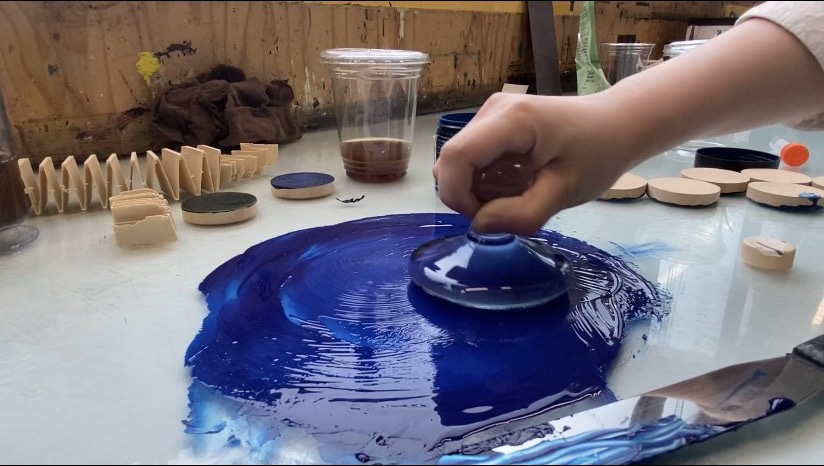Snapshot of Perceptual map
Snapshot of further material exploration



Snapshot of final design
Snapshot of final design
Video of travel box
- Teivah - We embrace and empower the spectrum of change, challenging the conventional and anthropocentric modern culture. We recreate the story by rekindling purpose beyond the central premise of humanity. Our design is inspired by Swiss architecture, transcended through an organic aura by using natural and sustainable materials. Our 3D printed wood-dust is derived from the Swiss timber industry, gifting it with life and a purpose. Additionally, ‘Teivah’ fosters local production and design processes, significantly reducing the carbon footprint. Algae blooms have a negative impact on biodiversity within marine ecosystems. Here, we harness the rich blue pigment extracted from Spirulina, a species of micro-algae grown in the lakes of Switzerland to maintain natural balance. By cherishing ecology, appraising its values and unique traits, Teivah will encourage a shift in consumer behavior, redefining the idea of luxury for the better. Client Project for Audemars Piguet. In collaboration with Namita Bhatnagar, Oladeji Awe, Zhiyi Zhou & Filippo Caprioli.
Snapshot of Perceptual map
Snapshot of further material exploration



Snapshot of final design
Snapshot of final design
Video of travel box